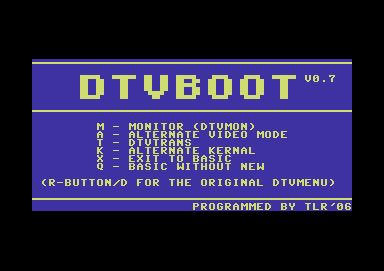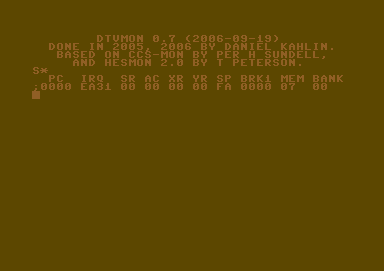First of all, sorry for posting in English. I am not so good at writing in German, though I can (mostly) read German fine. ![]()
I have released an improved version of my ML-monitor.
Hope you find it useful!
/Daniel
DTVMON 0.2 (info page here)
- Boot Menu.
- Installs as resident at $018000-$01BFFF.
- Handles full memory banking (ram and flash).
- Additional DTV V2/V3 opcodes.
SAC #imm ( Set ACcumulator mapping )
SIR #imm ( Set Index Register mapping )
BRA rel ( BRanch Always ) - Some documentation included. (original HESMON 1.1 documentation: here)
- NTSC version for the Hummer Game included.
(needs patched kernal (scroll to bottom) for I/O to work correctly)
Download: dtvmon-0.2.zip



